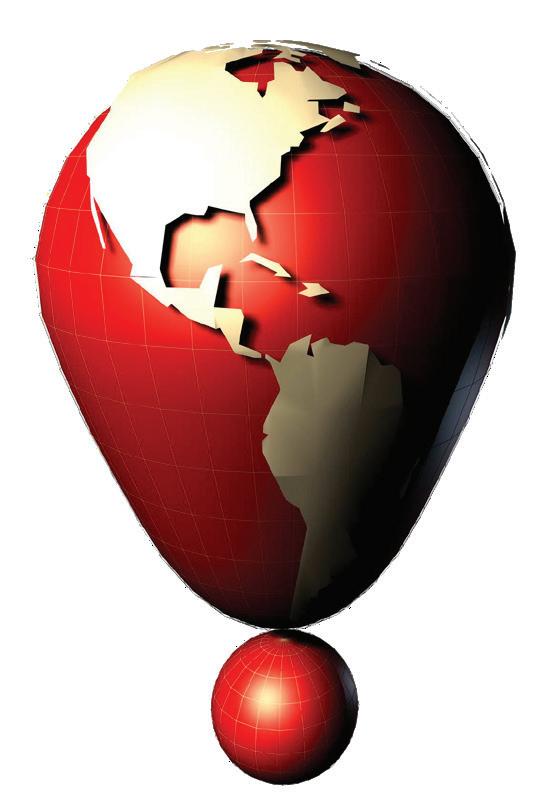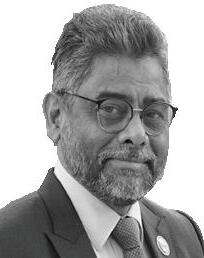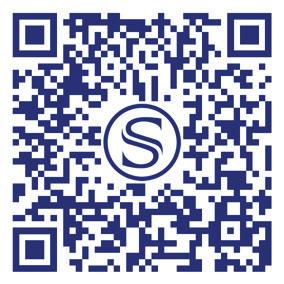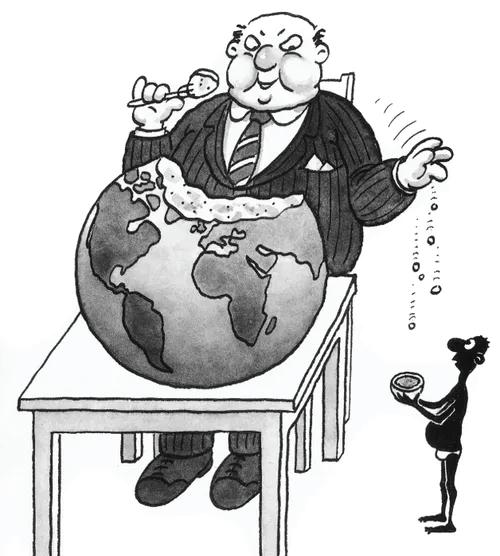
9 minute read
CHALLENGES FOR THE WORLD IN 2023
We analyse the important challenges likely to manifest and be addressed by the world at large this year.
The Year 2023 is likely to be remembered as one when the world emerged from the COVID-19 Pandemic. It may also be remembered as the watershed year for a new multi-polar world, profound changes to the world order and reforms to the global economy.
Advertisement
CHALLENGE 1: THE FUTURE OF DATA
In the last few years, there have been many reported cases of data-theft (including Facebook, Syniverse, Microsoft, Amazon and Twitter). Some governments have introduced Data Privacy Laws (like GDPR- General Data Protection Regulation, for UK and EU), and others, like India, are in the process of making suitable national laws. However, this approach to data-theft suffers from two serious shortcomings.

Firstly, little has been achieved to retrieve the stolen data, which continues to be sold on the Dark Web and Deep Web, for a price.
Secondly, stolen data in cyber space, like international crime, operates in trans-national spaces that have very limited national jurisdiction. At this juncture, national data-protection laws appear to be ‘too little too late’; and, in a sense, tantamount to locking the stable doors after the horse has bolted. The global response to data theft has, indeed, been inadequate.
We live in an increasingly connected world, where despite challenges, knowledge is becoming free, and people across borders are interconnected and communicating. People’s power has never been stronger in human history.
Q. What will happen if this inadequate approach continues?
TWO DEVELOPMENTS COULD TAKE PLACE, AS UNDER: -
(a) The Conventional Response: Secure the Future. Many security professionals believe if we cannot retrieve lost data, let us at least secure future data. Quantum & Block-Chain technologies have the potential to secure data from further theft. These technologies will certainly be adopted by progressive governments and companies.

(b)The Social Response: Adapt to the New Normal. Unlike the current & older generation, the younger generation is socially less concerned about privacy. Mankind could become more tolerant to Data-Visibility while continuing to be concerned about Data-Security. Data-Visibility is akin to showing off one’s fancy house and luxury car in cyber space.
Security professionals may prudently warn that such showing-off may unnecessarily draw attention from criminals & thieves. However, the mere act of showing-off neither justifies data theft nor excuses security agencies, who continue to be responsible for preventing data theft, which remains a crime across all nations.
Assessment: In 2023, progressive companies will work towards securing personal data through new technologies of quantum and block-chain technologies. National laws are likely to continue to remain inadequate in protecting the global commons from data-theft. Society is likely to become more tolerant towards data-visibility while continuing to demand more effective measures against cyber-crime.
CHALLENGE 2: GLOBAL SEMI-CONDUCTOR (GSC) INDUSTRY
Q. What are the Geo-Political imperatives for the GSC Industry?
Geo-Politics of Manufacture. In 2022, the US contribution to the GSC Industry was 12% by revenue, while that of the PRC’s was a healthy 25%. More importantly, 75% of the manufacturing was in enterprise-driven economies (China, Taiwan & South Korea). Notably, one Taiwan Company TSMC (Taiwan Semi-Conductor Manufacturing Company), produces an astonishing 90% of the most advanced semi-conductors.
Technology Transformation. TSMC is the world leader in producing semiconductors in wafer sizes of 7nm. Further, at their production plants (in Taiwan, Shanghai, Nanjing and one even in the US) production in 5nm sizes began in 2020, and 3nm was expected to begin in 2022. The plan for a shift to 2nm wafer size is planned for 2025.
Assessment: TSMC continues to hold the leading edge in the GSC Industry, and it is unlikely that any competitor (Samsung or Intel) will be able to catch up in the near future. TSMC’s largest trading partners include the PRC, US, EU and Japan. This global strategic dependence on TSMC has made Taiwan a dangerous flash point. The potential for conflict in the South China Sea was evident during US Speaker Nancy Pelosi’s visit to Taipei in August 2022.
Q. What are the Focus Areas for R&D in the GSC Industry?
The trend is towards smaller wafers sizes, from 10nm to 7nm to 5nm to 3nm and now onwards towards 2nm sizes, are being planned. VLSI (Very-Large-Scale-Integration) is the process of integrating billions of transistors onto a single chip to create integrated circuits (IC).
Initially (in the 70s), VLSI had applications in the manufacture of computers, mobile phones and automobiles. However, it now has applications in machine learning, AI, robotics and 5G communications, amongst other leading sectors.
Q. What are the Prospects for the GSC Industry?
US Policy. During the period 1980-90, the US was the leading manufacturer of semi-conductor chips (37%), which fuelled the computer and TV revolutions. However, since then, US contribution has declined to just 12% by revenue.
US semi-conductor dependence on enterprise-driven economies was exposed during the Pandemic. The US Government has initiated strong measures to overcome this challenge. In 2022, the US Congress passed the Chips & Science Act, providing US$ 280B in funding, to boost domestic research & manufacturing in the US.
Immediate Future. Gartner (28 Nov 2022) points out that the market is polarised between consumer-driven economies (US & Western Economies) and Enterprise-driven economies (China, Taiwan, Korea).
The polarisation, aggravated by the Pandemic’s after-shocks of global inflation & higher interest rates, may hold back the GSC Industry’s growth in 2023. However, in 2023 strategic developments in both technology & policy may impact long-term prospects in this strategic sector.
Long-term Prospects. New tech developments are making chips smaller and more powerful. Tiny chips powering modern electronics are literally shifting the boundaries between the possible & impossible. Modern chips are so powerful that they can house 100B transistors on a single wafer. Chips are being touted as the ‘New Oil’ in a future market.
Q. What are the Strategic Threats & Opportunities in the GSC Industry?
Threats & Opportunities to the GSC Industry stem from the dependence of consumer-driven economies (US, Western Economies) on enterprise-driven economies (PRC, Taiwan, Korea).
Supply chain vulnerabilities in the GSC Industry are a national security threat which needs to be addressed by nations. It is NOT easy to create alternatives to TSMC; high entry barriers to include technology threshold, finance capital, and tech-manpower, are some of the challenges.
Assessment: Strategic Threats & Opportunities. Three geopolitical scenarios, that could play out in 2023 are as follows: -
(a) Will the PRC take control of TSMC?
(b) What will the US do if the PRC does take con- trol of TSMC?
(c) What alternatives do the consumer-driven economies have to TSMC?
References. Paul Raj, Professor Emeritus Stanford University; Michael A Peter, Semi Conducts, Geopolitics & Tech Rivalry, 31 Aug 2022; Semi-Conductor Association of the US (SIA), State of US Semi-Conductor Industry in 2022; Gartner Forecasts, Worldwide semi-conductor Revenue Growth Decline to 3.6% in 2023
CHALLENGE 3: TRYST FOR GLOBAL SUPREMACY
The PRC, is already the largest economy in the world, by PPP calculations. In 2023, as the PRC emerges from a late surge of the COVID Pandemic and its disastrous ‘Zero Covid’ Policy, the Chinese Economy is likely to recover and resume its dominance over the World Economy.
China’s Belt & Road Initiative (BRI), its grand strategic initiative to gain acceptance in the world order, has suffered serious setbacks because of the pandemic and its association with unreliable political regimes (Pakistan & Myanmar).
Assessment: The PRC is currently the only country with resources to pursue transnational infrastructure projects on the scale of the BRI. When they revive the BRI in 2023, will the PRC be open to dealing with more stable political regimes? India has legitimate concerns about the CPEC (China-Pakistan Economic Corridor) being constructed in the disputed territories of J&K without Indian approval.
Q. Will 2023 provide an opportunity for India and the PRC to resolve the historical border issue, as a prelim inary step towards more inclusive participation by India, in BRI proj ects?
CHALLENGE 4: FUTURE OF THE PETRO-DOLLAR
The US Dollar moved away from the Gold Standard, by US Presidential ordnance, in 1971. By removing the standard, the Federal Reserve of the US, became free to create a new currency. Theoret ically, this should lead to monetary inflation; but in this case, the impact of potential inflation was absorbed by increasing global demand for the Green Back.
Further, International demand for the US Dollar was consolidated when it became the currency for the most traded item in world markets, Brent Crude Oil.
The US dollar is a national currency, unregulated by a world reserve bank or any other similar mechanism and yet it has remained the world’s premium reserve currency for almost seven decades. currency that could finally end the inflationary monetary policy the world has witnessed since President Richard Nixon placed his signature on the Presidential Ordnance in 1971?
Many economists have warned about the strategic vulnerability of the US dollar. In 2022, Saudi Arabia and Russia were the top two exporters of oil in the world. While the largest importers remain the EU, the PRC and India.
Assessment: There is growing realisation in the global Oil & Gas Industry about the strategic vulnerability of the US dollar. Will the creation of alternatives to the Petro-dollar diminish its role as an international currency? Ironically, would that benefit otherwise bankrupt nations like Venezuela, Iran, Sri Lanka and Lebanon, which are dependent, excessively on the US dollar?
Q.
CHALLENGE 5: RUSSO-UKRAINE WAR
Later this month (February 2023), the Russo-Ukraine war will enter its 2nd year. Despite daily dosages of the senseless violence in the media, the belligerents seem NO closer to a ceasefire than they were a year ago. What prevents Presidents Volodymyr Zelensky and Vladimir Putin from seeking resolution through dialogue rather than on the battlefield?
Georges Clemenceau, the 20th-century former PM of France, famously said, “War is too important a matter to be left to Generals”. Obviously, in the Russo-Ukraine War, there are strategic considerations by other players that prevent the principal belligerents from negotiating a cease-fire. Who might those other players be? What are those considerations that are more important than the tragedy of Ukraine?
Assessment. There are two possible strategic reasons for the continuation of the Russo-Ukraine war. Firstly, the Russian Oil & Gas Industry and its key role in the revival of Russia’s geo-political power. The second is the need to sustain NATO as a key customer for the US Military Industrial as-complex.
Has the creation of new Russian markets in India and the PRC pre-empted the EU threat to reduce dependence on Russian products? Will the US succeed in reviving NATO and creating a new Cold War between the EU and Russia? The answers to both these questions should play out in 2023 and will also be determined from electoral results in the EU.
CHALLENGE 6: TECH DISRUPTORS
The breathtaking pace of technological change should continue to amaze us in 2023. Life-changing breakthroughs in diverse fields are taking place every day. Here are four tech transformations that could see a practical application in 2023.
(a) 5-G & Its Applications. The advent of 5-G should see radical improvement in the speed of the Internet and the quality of video experiences. It should also see the market availability of Virtual Reality (VR) and Augmented Reality (AR) products. These products are likely to make individuals more productive and reinforce the ‘work-from-home’ culture in modern society.
(b) Humanoid Robotics. AI and machine learning have already made a quantum breakthrough in human conversation with products like Amazon Echo and Siri.
Another group of engineers have made humanoid forms capable of lip movements, facial expressions and common body-language expressions (yawning, astonishment, surprise, happiness). In 2023, we can hope to see applications of humanoids in the fields of hospitality, education and health care.
(c) 3-D Printing. 3-D Printers are already available on the market and can be used for building models and prototypes. Newer varieties of prototypes are being used for making final products, like shoes, furniture, replications of sculptures, jewellery and toys. 3-D Printing is also being used by professionals, like artists, archaeologists and the Armed Forces.
(d) Automation in Transportation. While there have been delays in introducing automation in driving, we could hope to see its advent in 2023.
Other Challenges. Some other challenges in 2023 are the likely continuation of recession in the EU, manifestations of the COVID-19 Pandemic and the revival of crypto-currencies as an alternative to govern- ment-controlled fiat currencies.
THE WORLD HAS CHANGED!
Eighty years ago, two remarkable men (Franklin Delano Roosevelt, the only US President to win four terms of office and Cordell Hull, the longest serving US Secretary of State), in the aftermath of the 2nd World War, envisioned the Liberal World Order.
That order promoted democracy in the world and encouraged global governance through multilateralism. It also rendered unconditional support for the independence of nations from colonial rule, the elimination of the abhorrent policy of apartheid and support for human rights. Unfortunately, the Liberal World Order has passed into history.
In today’s world, there appear to be no visible rewards for international statesmanship in democracies. The new generation of leaders is focused more on national interests in the narrow context of winning elections.

At this juncture, more than ever before, we need leaders inspired to leave their footprints in history and make the world a better place.
On the other hand, we live in an increasingly connected world, where despite challenges, knowledge is becoming free, and people across borders are interconnected and communicating. People’s power has never been stronger in human history.
With the failure of multilateralism, transnational spaces remain a concern for our common future. Hopefully, People’s Power and the powers of Technology, could bring the positive changes we need as early as 2023.









